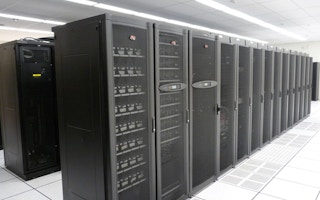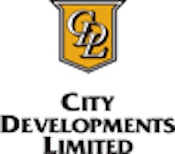Given the vast amounts of energy data centres consume, efficiency is a top priority - and there are simple steps to achieve it, said experts at a workshop on day two of the International Green Building Conference in Singapore.
Ray Pfeifer, senior vice president of business development at SynapSense – a US-based firm that provides energy efficiency equipment for data centres – said that managers can either find cheaper ways to cool servers or they can adapt the system to match the amount of the data centre capacity currently in use, referred to as load.
Most of Singapore’s data centres use cooling and electrical systems designed for a full load, when in reality many of them operate at only a fraction of this level, he noted. He added that new data centres can take one to three years to reach their top load, which almost never exceeds 80 per cent of what they were designed to handle.
Data centres operating at less-than-full capacity cannot achieve maximum efficiency unless their cooling and electrical systems can be adapted, and that rarely happens in Singapore, he said.
“This is not unusual. We see that all over the world,” he added.
Mr Pfeifer was speaking at an industry workshop attended by about 50 professionals on Singapore’s new Green Mark certification scheme for data centres, which he helped to develop prior toits launch on Wednesday.
The new rating system is heavily weighted toward energy efficiency because of the high carbon emissions associated with power generation and high electricity costs, which can account for up to half of operating expenses.
Mr Pfeifer said that the issue of mismatched support systems is problematic enough that two out of five test cases for the new Green Mark scheme failed to achieve the certification in the first round because their facilities were working to support a much heavier load than was necessary.
New data centres should be designed with incremental growth in mind – through the use of modular designs or specialized chiller systems – and existing data centres needed to assess their energy performance with partial loads, he noted.
The Green Mark scheme, which will include new data centres early next year, awards points for data centres that install automated metering systems to help track their performance – a move that will also help managers attain a Singapore data centre energy management certificate called SS564.
Data centres benefit from SS564 because managers have to provide real data, and it focuses them on measuring energy use, he said. “Unless you want to spend a lot of money on an external consultant to come in and maintain an SS564 certificate, that means installing sub-metering,” he added, referring to meters that measure individual parts of the system.
The Green Mark scheme also encourages managers to measure the energy efficiency of components from contractors to make sure everything does what it is supposed to do.
“What we’re trying to do is change the behaviour of the industry as well,” said Mr Pfeifer, noting that suppliers should be accountable for the efficiency of their equipment.
Another factor that influences the energy demand of data centres is the efficiency of the IT systems that process the data. But this is not straightforward as only data centresowned by a single business can control how efficiently software processes information.Mr Pfeifer expects standards to start appearing in Singapore in about three years to address the problem.
Better safe than sorry
Professor Toh Kok Chuan, principal research scientist of the Energy Research Institute at Singapore’s Nanyang Technological University (ERI@N), noted that the key reason why data centre managers are often slow to adopt energy efficiency measures is the perception that it may impact a facility’s reliability.
Executive manager of Singapore’s Infocomm Development Authority (IDA), Dr Ronnie Lee, who facilitated the workshop, said that it would be a challenge to get data centre managers focussed on energy efficiency because “if the data centre goes down, their career is over”.
However, Professor Toh said the Green Mark scheme allowed leeway for the fail safes – such as duplicate servers and back-up cooling systems - that data centres use to ensure their service is uninterrupted and the data is safe.
The goal was to provide a simple rating scheme that worked for data centres of all sizes so they could maintain their reliability while also improving their energy efficiency, he added.
Dr Lee noted that even with improved energy efficiency, Singapore’s data centres will never be the world’s most efficient, because its hot climate meant its data centres will always need mechanical cooling.
Asked if data centre managers were better off siting their facilities in colder locations, SynapSense’s Mr Pfeifer said that Singapore would always have local data centres for reasons of speed and data security, particularly for its financial services sectors. The Republic has advantages as well, such as political stability, a dearth of natural disasters and quick access to the rest of Asia, he added.
Improving energy efficiency in data centres was a “great business decision” and some of the efficiency measures, such as making sure energy efficient settings on IT components were switched on, cost next to nothing, he said.
“There is all kinds of evidence that the additional upfront costs of doing this is far outweighed by the return on investment and energy savings benefits of operating a data centre efficiently for three years,” added Mr Pfeifer.
Eco-Business.com’s coverage of the International Green Building Conference 2012 is brought to you by City Developments Limited (CDL).






















